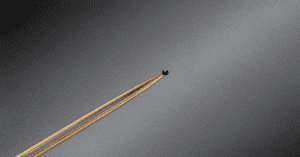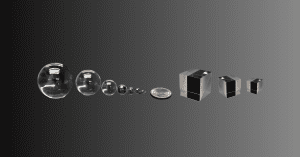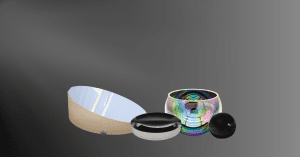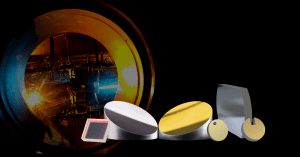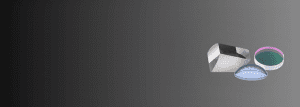Ball Lenses
Ball lenses are perfectly round optical spheres that consist of just one transparent substrate such as UV grade fused silica, BK7, or sapphire. Shaped like a tiny, precisely made marble, they are equivalent to two Plano-convex lenses separated by a parallel plane. Custom ball lenses are typically quite small, with a diameter of a few mm or less than 1 mm, and are used as beam collimators for optical fibers, for fiber-to-fiber coupling, to improve signal coupling between fibers, emitters, and detectors, and in the miniature optics used for spectroscopy and bar code scanning. They can also be used as objective lenses for specialty microscopes.
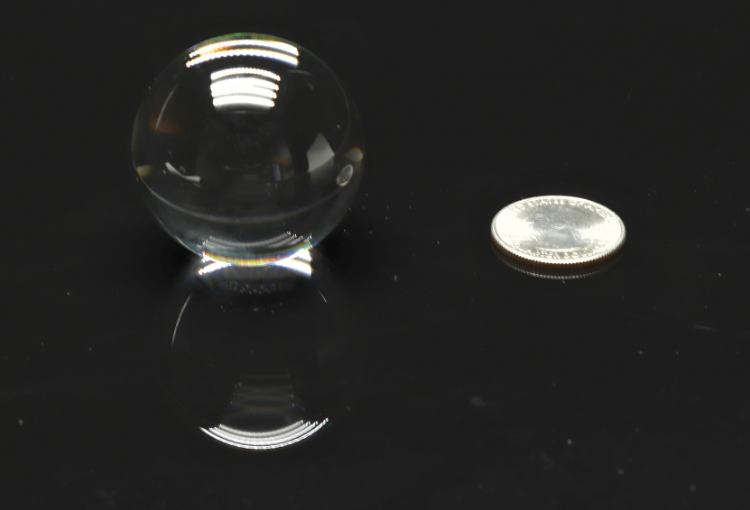
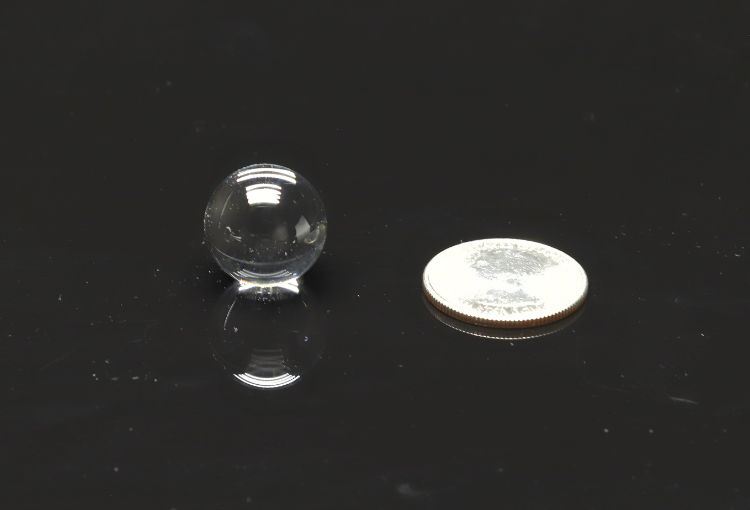
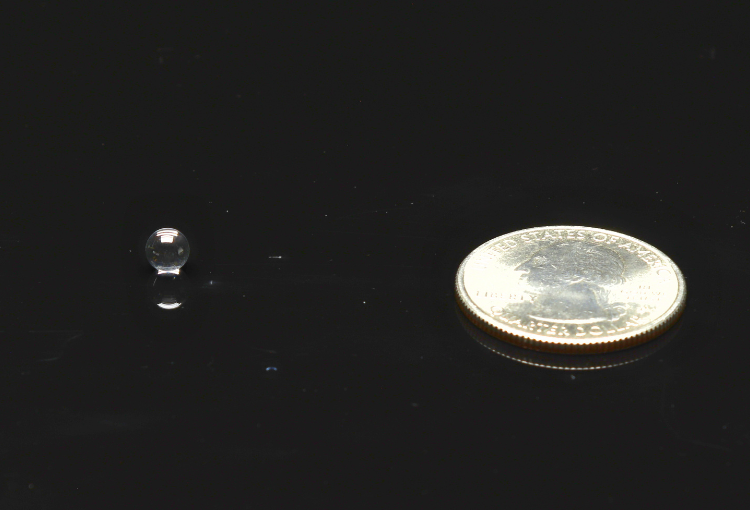
Parameters of Ball lenses
There are four important parameters to keep in mind when working with ball lenses. These include the diameter of the ball lens (D), the effective focal length (EFL), the back focal length (BFL), and the index of refraction (n).
The effective focal length is simply the distance between the beam focus and a plane through the center of the lens. It can be calculated from the diameter and the index of refraction using this simple equation:
EFL = nD/ 4(n-1)
- Diameter (D): The overall size of the ball lens.
- Index of Refraction (n): A measure of how much light is bent, or refracted, when entering the material of the ball lens.
- Effective Focal Length (EFL): The distance between the beam focus and a plane through the center of the lens
The back focal length, on the other hand, is the distance from the focal point to the lens surface. This is always smaller than the effective focal length by the radius of the ball.
A fifth important parameter related to the environment rather than the ball itself is the diameter of the input source, (d). It is important to note that every ball lens will exhibit spherical aberrations, and these may become significant when working with small ball lenses where the diameter of the incident beam is scarcely smaller than the diameter of the ball itself. Because of this, you should not expect to attain your theoretical minimum spot size of focus. If these aberrations are not acceptable aspheric lenses can be used instead of optical glass balls.
The numerical aperture of a lens depends on the size of the lens (D), the refractive index (n), and the diameter of the source.
Examples of Ball Lenses in Fiber Optics
Ball lenses are a great choice when you want fiber to fiber coupling; coupling light from one fiber optic to another fiber optic that has a very similar numerical aperture. Use two identical ball lenses, and place them at BFL (back focal length) from the fibers.
Ball lenses are also a good option for laser to fiber coupling. Here you’ll want to choose an appropriate size ball after looking at the cross-sectional diameter of the laser beam and calculating the NA of the ball lens in the system. This NA must be less than the NA of the fiber optic, or light will not be fully coupled.
Factory Standard
| Diameter | 2-50mm</3> |
| Scratch & Dig | 20/10</3> |
| Sphericity | 0.05mm |
| Surface Quality | 40-20 |
| Diameter Tolerance | +/-0.05mm |
Advantages of Ball Lenses
Ball lenses offer several advantages, including:
- High Performance: Excellent focusing capabilities and suitability for high-precision optical systems.
- Wide Variety: Available in various materials and sizes to suit different applications.
- Customization: Tailored solutions for specific optical requirements
Applications
Fiber Optics: Ball lenses are widely used in fiber optic systems to improve the efficiency of light transmission and signal coupling. They serve as beam collimators, focusing the light from the fiber to a parallel beam, which is crucial for long-distance signal transmission and reducing signal loss.
Miniature Optics: In miniature optics, ball lenses are used in devices such as endoscopes, microscopes, and barcode scanners. Their small size and high precision make them ideal for applications where space is limited, and high optical performance is required.
Specialty Microscopes: Ball lenses serve as objective lenses in specialty microscopes. Their ability to focus light precisely makes them suitable for high-resolution imaging applications.
Custom Ball Lenses at Avantier
At Avantier we have the ability to design and manufacture custom ball lenses that fit our client’s exact needs. Whether you are working in fiber optics or hoping to design a micro-optical device such as an endoscope that relies on very tiny components, we’re ready to come alongside you as needed. Please contact us today to schedule an initial consultation or to discuss our manufacturing potential.
WE CAN HELP YOU!
Contact us NOW for sales & expert advice.


